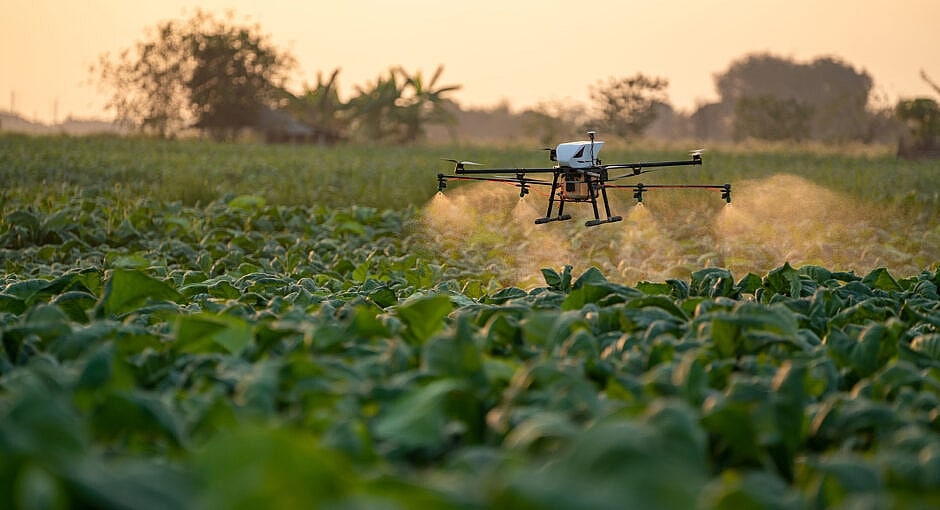Agriculture is one of the most vital sectors of the Philippine economy. Pangasinan is a leading agricultural province in the country, known for its high-quality rice, corn, and fish production. However, despite its potential, the agriculture industry in Pangasinan has been facing challenges such as climate change, limited resources, and low productivity. But with the rise of Artificial Intelligence (AI), the agricultural sector in Pangasinan is starting to transform. In this article, we will explore how AI is improving agriculture in Pangasinan, the benefits it offers, and the advancements in AI technology that are driving this transformation.
Introduction: The Role of AI in Agriculture
AI, or Artificial Intelligence, is the simulation of human intelligence in machines that are programmed to learn, reason, and act like humans. In agriculture, AI can help farmers make better decisions, optimize resource utilization, and increase productivity. With the increasing use of AI in agriculture, the industry is moving towards precision farming, where farmers can make data-driven decisions based on real-time information.
AI in Agriculture in Pangasinan: Advancements and Benefits
Smart Irrigation
Water scarcity is one of the major problems faced by farmers in Pangasinan. AI can help optimize water usage by providing real-time data on soil moisture levels, weather conditions, and crop growth. Smart irrigation systems use AI algorithms to manage water usage efficiently, reducing water wastage, and increasing crop yield.
Crop Management
Crop management is another area where AI is making a significant impact. AI can analyze crop data, such as soil and weather conditions, and provide farmers with insights on when to plant, fertilize, and harvest crops. This information can help farmers optimize their crop yield, reduce waste, and increase profitability.
Pest Control
Pest control is a significant challenge for farmers in Pangasinan. Traditional methods of pest control involve the use of pesticides, which can be harmful to the environment and human health. AI can help farmers detect and prevent pest infestations using advanced sensors and machine learning algorithms. This technology can help farmers minimize the use of pesticides, reducing environmental damage and improving crop quality.
Livestock Management
Livestock management is an important aspect of agriculture in Pangasinan. AI can help farmers monitor the health and well-being of their livestock, detect diseases early, and optimize feed consumption. This information can help farmers improve the quality of their livestock, increase productivity, and reduce costs.
Advancements in AI Technology
The advancements in AI technology are driving the transformation of agriculture in Pangasinan. Some of the latest advancements include:
Autonomous Farming
Autonomous farming involves the use of self-driving tractors and drones to perform farming tasks such as planting, fertilizing, and harvesting crops. This technology can help farmers save time, reduce labor costs, and increase productivity.
Robotics
Robotic technology can help farmers perform tasks such as pruning, weeding, and harvesting crops more efficiently. Robots can also help reduce labor costs and increase productivity.
Predictive Analytics
Predictive analytics uses machine learning algorithms to analyze data and predict future events. In agriculture, predictive analytics can help farmers predict crop yield, detect diseases, and optimize resource utilization.
Conclusion: The Future of Agriculture in Pangasinan
AI is transforming the agriculture industry in Pangasinan, offering solutions to the challenges faced by farmers. With the advancements in AI technology, we can expect to see more efficient and sustainable agriculture practices in the future. As AI continues to evolve, it will become an essential tool for farmers in Pangasinan to increase productivity, reduce waste, and improve the quality of their crops and livestock.
FAQs
- What is AI in agriculture? AI, or Artificial Intelligence, is the simulation of human intelligence in machines that are programmed to learn, reason, and act like humans. In agriculture, AI can help farmers make better decisions, optimize resource utilization, and increase productivity.
- How can AI improve crop management in Pangasinan? AI can analyze crop data, such as soil and weather conditions, and provide farmers with insights on when to plant, fertilize, and harvest crops. This information can help farmers optimize their crop yield, reduce waste, and increase profitability.
- What are the benefits of smart irrigation in agriculture? Smart irrigation systems use AI algorithms to manage water usage efficiently, reducing water wastage, and increasing crop yield. This technology can help farmers optimize their resources, save time, and increase profitability.
- How can AI help with pest control in Pangasinan? AI can help farmers detect and prevent pest infestations using advanced sensors and machine learning algorithms. This technology can help farmers minimize the use of pesticides, reducing environmental damage and improving crop quality.
- What are the challenges in implementing AI in agriculture in Pangasinan? One of the challenges is the cost of implementing AI technology. Many farmers in Pangasinan may not have the financial resources to invest in the necessary hardware and software. Additionally, there may be a lack of awareness and knowledge about AI technology and its potential benefits.






